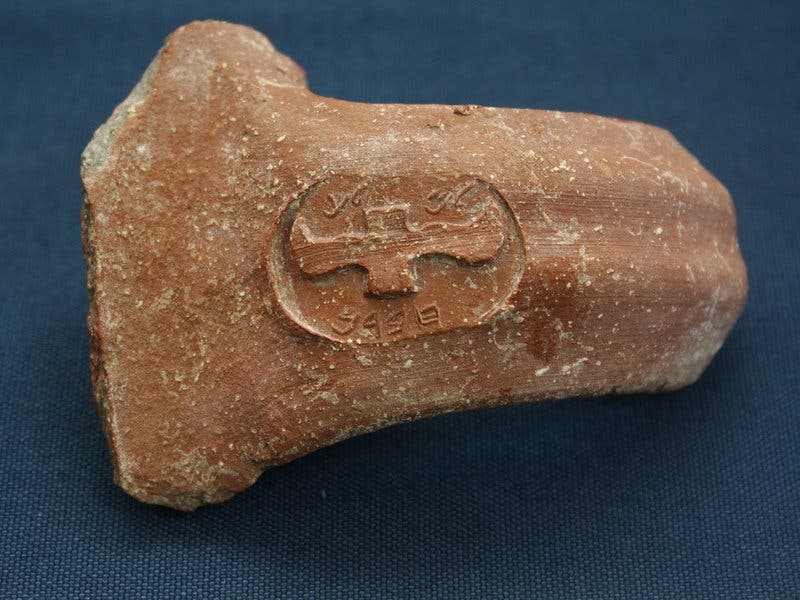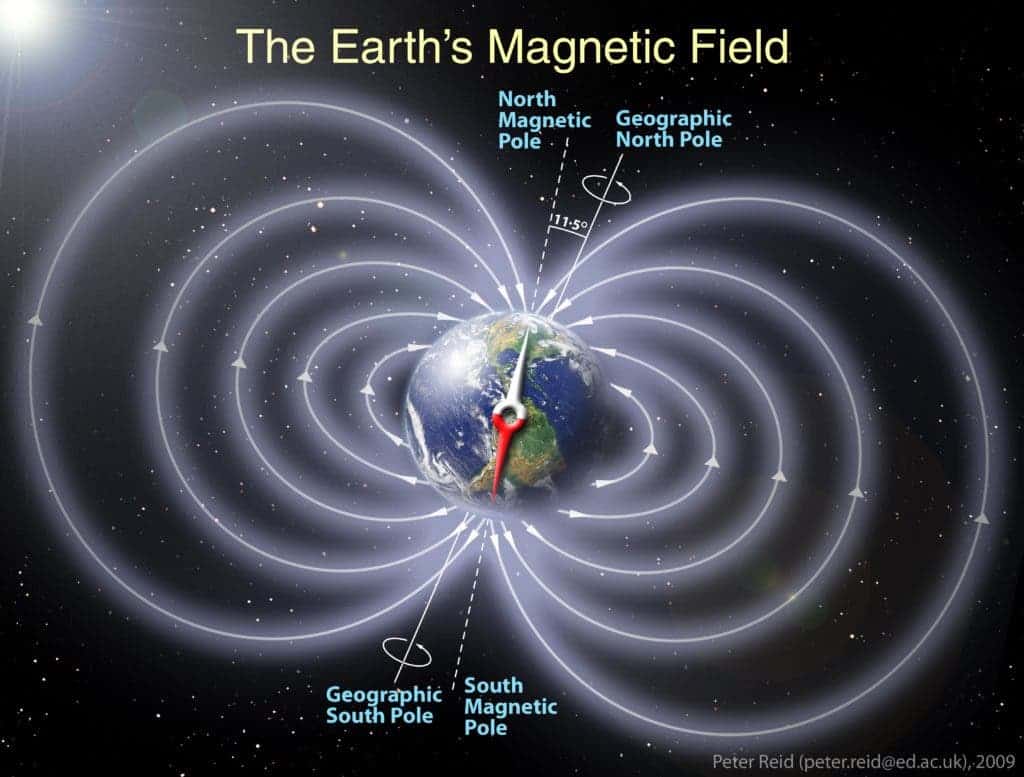Three millennia ago, a potter working near Jerusalem made a big jar. It was likely meant to hold olive oil or some pretty valuable liquid. The potter stamped the jar with the royal seal and sent it as tax payment for his work. This was common practice and was maintained for centuries despite ongoing wars and numerous kings exchanging the reigns — potters paid their taxes in pottery. But without knowing it, these artisans didn’t only perpetuate an old system or taxpaying, they also monitored the Earth’s magnetic field.
Earth’s magnetic field changes all the time — geologically

Image courtesy of Oded Lipschits
You might have heard the Doomsday theories that the magnetic poles will reverse and that will kill us all. That’s simply crap. Earth’s magnetic poles have switched numerous times in its history, and are in state of constant movement. We just don’t see that because it takes a lot of time for them to move around. If you were alive 800,000 years ago and you’d look at your compass, you’d be shocked. North points where South is, because back then, the poles were reversed. For the past 20 million years, Earth has settled into a pattern of a pole reversal about every 200,000 to 300,000 years, although it has been more than twice that long since the last reversal.
We know this does happen, but we’re still not exactly sure why this happens
“Albert Einstein defined this problem as one of the five most enigmatic issues in modern physics, and it still is, because the mechanism that creates the magnetic field is not well understood,” says Erez Ben-Yosef, an archaeologist at Tel Aviv University in Israel and an author of the paper.
This is rarely a clean back-and-forth process, as magnetic fields morph and push and pull at one another, with multiple poles emerging at odd latitudes throughout the process. We know this thanks to cores taken from deep ocean floors. The magnetic field determines the polarization of lava as it is laid down on the ocean floor on either side of the Mid-Atlantic Rift where the North American and European continental plates are spreading apart. Like a compass, the lava records the position of the poles when it cools down. Date the lava, and you know where the poles were at that time. Date many pieces of lava, and you’ll have a good picture of how the poles evolved. Something similar happened to the pots.
Pots, pans, and magnetometers
As the potters would work the clay, the molten iron that was rotating deep below them tugged at tiny bits of magnetic minerals embedded in the potters’ clay. The jars were heated in the kiln and then cooled down, just like the lavas did, and magnetic minerals in the clay aligned themselves. The only problem then is how you date the pots. This is where it gets even cooler: remember when we said potters used to stamp the king’s seal onto their work? That’s how you date them.
“Instability — or even better, wars and destruction — are the best for us,” says Ben-Yosef. (Peaceful transitions are nearly impossible to spot in sedimentary layers, but something like a burned city makes a clearly visible dark line. And the Assyrians had a knack for destroying cities.)

Credits: Peter Reid, The University of Edinburgh
Ben-Yosef and his colleagues studied 67 jar handles spanning from the late 8th century B.C. to the late 2nd century B.C., finding that the movement of the poles was much messier than most people believed. For instance, during the 8th century BC, things got a little wild and the intensity of the magnetic field was double to what it is today.
“It was the strongest it’s been, at least in the last 100,000 years, but maybe ever. We call this phenomenon the Iron Age spike,” Ben-Yosef says.
After that, it started dropping fast, losing 30% of its intensity in just 30 years. This is particularly interesting as scientists have already indicated that the Earth’s magnetic field intensity is dropping, something which is yet unexplained. We’ve started learning this after geophysicists started using magnetic field measurement instruments called magnetometers.
“We are losing the magnetic field,” Ben-Yosef says. “We already lost more than 10 percent of its strength, so people are concerned that we might lose the magnetic field entirely.”
Geology and archaeology

Image courtesy of Oded Lipschits
So while we had a pretty good idea of how the magnetic field evolved in geologic time, now we also get a better picture of what happened in recent times. Geologist Steven Forman of Baylor University was thrilled to read this study. He also found evidence of a magnetic spike about 3,000 years ago, based on a different study of Hall’s Cave in Texas.
“But we didn’t have the type of time resolution that the study in PNAS has,” he says, because it’s a lot harder to pinpoint rocks on a timeline than it is to pinpoint man-made objects. “That’s what so cool about what they did. They pulled this out of heated ceramics.”
It’s absolutely delightful to see how to different branches of science can meet up at a middle point and complement each other so. Geologists, archaeologists, physicists, and ancient potters – working together to solve one of the Earth’s greatest mysteries. Who would have thought?


